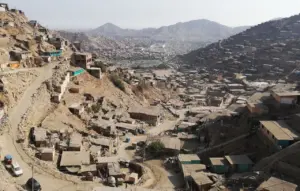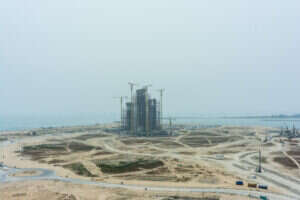There is no shortage of visionaries when it comes to imagining the future city. The phrase probably conjures up a mental image of a futuristic Metropolis, or one filled with flying DeLoreans. Or perhaps your taste is more Bladerunner? Will we create a Kurzweilian cybertopia, or a hypnopaedic Brave New World of pre-conditioned bliss?
We all love visions of the future, filled with burnished chrome or soot-stained neo-Victorians: a world of exotic potential. But ask yourself for a moment: where is the leisure in such visions? Who is performing Bizet’s Carmen in the world of I, Robot, or playing Shakespeare in Wall-E’s horrific cultural catatonia? Do pop stars twerk in Azimov’s Foundation? What does culture, high or low, look like in the future?
We’ve all heard of connected ‘Smart Cities’, with their focus on fridges that talk to your phone and urban spaces aiming for a state of constant productivity. Now the notion of ‘Playable Cities’ is taking hold as a cultural response. You can see it at work in advertising campaigns like thefuntheory.com where people are ‘nudged’ to shun escalators for musical piano steps, or recycle bottles by turning bottle banks into video game. Meanwhile in Sydney, VIVID is fast becoming one of the world’s best interactive festivals, bringing tens of thousands onto the streets to re-contextualise their urban spaces in a variety of playful ways: lights, music, and inter-action.
Elsewhere the Tate’s IK prize has inspired night-dwelling internet-controlled robots that will tour the gallery’s collection. Mudlark’s Chromorama let you turn tube trips into quests, in Boston you can contribute your pulse to a musical soundscape, in Edinburgh you can evade zombies. (There are always zombies.) This is the topsy-turvy of the internet age, making the digital physical and incubating a 21st century notion of misrule.
Last year Bristol arts organisation Watershed set a challenge: find ways of opening up the city’s urban spaces, using digital technologies to delight and enchant. The winner was Pan Studio’s Hello Lamp Post, which invited the people to experiment with a whole new way of communicating: by texting unique codes found on street furniture, the public could ‘wake up’ a sleeping object, and begin a conversation with it. The messages they left would be passed on to later participants. By hijacking existing technology, Hello Lamp Post allowed people to interact with their environments in a new way, allowing people to indulge their imagination to make mundane objects magical with the simple trick
On Monday, Watershed will announce the winner of this year’s Playable Cities award, and I’m optimistic that we will see a similar level of pragmatic digital delight and tomfoolery. Jouyous, enigmatic, or simply baffling suggestions that aim to augment the wonder of the real world: if last year was about working out what playable meant, this year will be about bold and beautiful ideas.
Our cities are communal and physical and layered, stratified by centuries or even millennia of physical iteration. But we do have a modicum of control over their future. We can submit to screens on every wall and table – or we can demand quirky collisions of technology, culture and hyperlocality that spark the brain.
Tom Uglow is Creative Director at Google’s Creative Lab and a judge for the Playable City Awards. He is on Twitter as @tomux.






